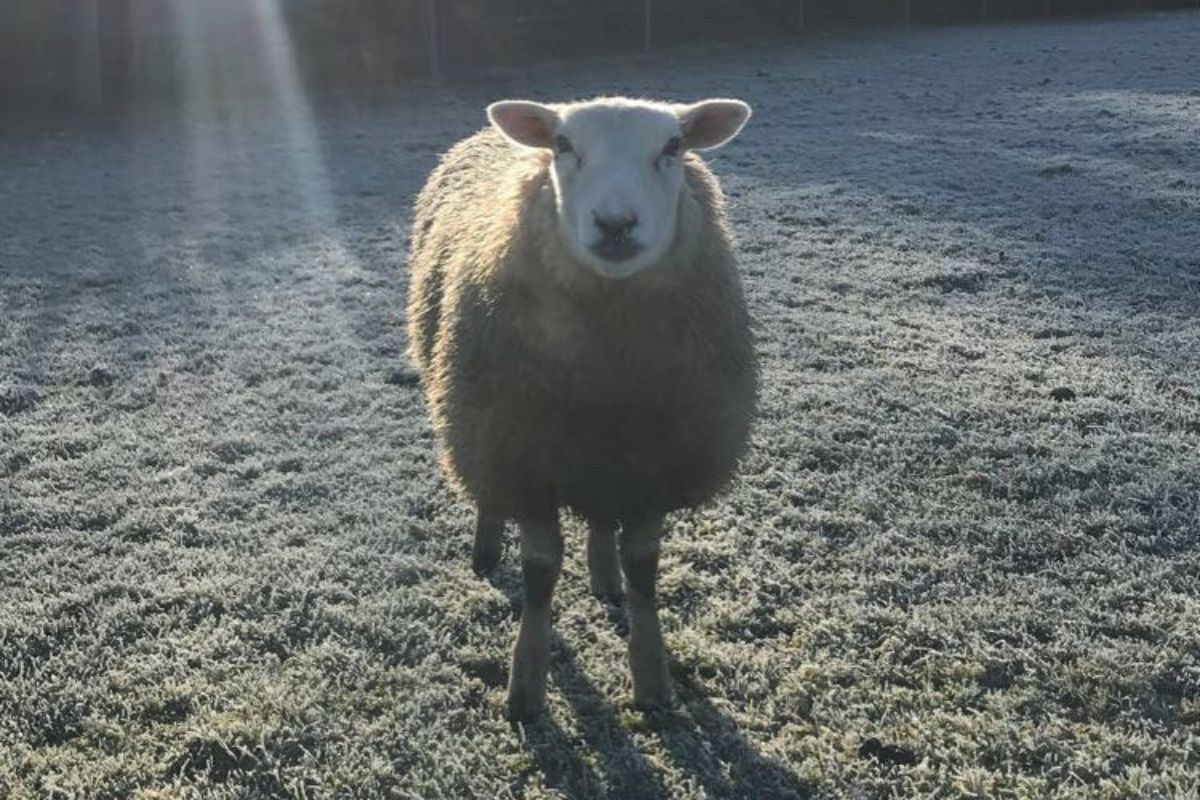As part of this week’s Farmer Focus segment, Catherina Cunnane, speaks to Sam Bettles, a chef turned farmer who runs a herd of sucklers and flock of sheep.
Seven years ago, Sam Bettles made a brave move and swapped a steady career as a chef in a Michelin-star restaurant for full-time suckler and sheep farming.
Although the 36-year-old did not grow up on a farm, he was inspired by his stepfather, Paul Lysley, who has “farmed all his life”.
Sam purchased seven organic Beef Shorthorns from Vale Meadows and six sheep from Tim White, Wiltshire Horns to lay the foundation for his own enterprise.
1,000-acre farm
Now, just shy of a decade later, he farms 10 suckler cows and 2,500 ewes on his 1,000-acre farm in Castle Combe.
“Sucklers and sheep suited our organic land. I always loved the outdoor life but started out cheffing under Robert Clayton at The Bath Priory,” he told That’s Farming.
“Working in a kitchen is a different kind of pressure, and the hours are long and unsociable. I have lots of help from my mentors, Mark Candy, and Colin Ward. My mother and stepfather have always been on hand to help.”
“I was lucky to be able to start on my stepdad’s farm with a small 3-acre paddock with six sheep and progressed to take on about half of the farm. To go out and buy land is a big ask for any young farmer starting out.”
“From there, I ventured out to start a business with my mentor, Mark. Since then, a section of the farm has been left to me but is currently rented out. It was difficult starting off, as I had no experience and little knowledge.”
Beef Shorthorn sucklers
His pedigree herd, which he manages under the Colham prefix, consists of ten pedigree Beef Shorthorns females.
Sam was introduced to the breed by Martin Reynolds and Tina, and Simon Russell of Stanford Park Shorthorns and established his own herd in 2018 with the purchase of 10 in-calf organic heifers.
“Firstly, I was drawn to the breed because of its end-product. It is a lovely cut of meat and is versatile. Secondly, the breed suited our land and outdoor system.”
“We use a pedigree stockbull and introduce an outcross sire every time we have replacement offspring coming up in the herd as part of a 24-month-old calving system. Sucklers calve during April/May because of the availability of spring grass and warmer weather conditions.”
All females are retained as replacements, while, Sam slaughters all male progeny, but is hopeful that, in time, he will produce some bulls for breeding purposes.
His ideal cow-type has good fertility, strong maternal traits, a good temperament, calving ease and structural soundness.
“The key elements of running a successful suckler operation are grassland management, a strict cull policy, stocking rates, and good fertility.” added the Beef Shorthorn Society member.

Sheep
On the other hand, Sam farms 2,500 pedigree Lleyn ewes, which lamb from January through to May.
He has placed his faith in the prolific breed primarily due to its excellent maternal traits and carcass conformation. Ewes are served by Romney rams, while he uses AI to introduce new bloodlines to the flock.
“Through AI, we produce about 100 breeding rams a year, of which we keep around 50 to 60 rams for our ewes and sell the rest. We take the ram out from ewes after 6/7weeks to achieve compact lambing.”
“Considering my background, I enjoy seeing the journey from plate to field. Each day is different with new challenges, and that is what makes farming a lifestyle like no other.”
“However, farming has its downfalls – there aren’t enough hours in the day, and you work alone most of the time. I miss the companionship that I had when cheffing.”
“If I could turn back the clock, I would have gone to college and learnt at least the basics first. I have had to learn along the way, and that has been hard at times.”

Future
Fuelled with ambition, Sam hopes to increase his suckler herd to 100 breeding females and bump up ewe numbers to 1,500.
Besides, he has a burning desire to combine his newfound passion for farming with his cheffing expertise.
“I would love to establish a cook school to be able to see the process from field to fork. Also, I would like to walk people around the farm see the animals grazing to the butchery and then to the plate. It is important the people are kept in touch where our food is from. Also, I would love a farm shop / café for visitors.”
“The journey has just begun for me, and I am learning every day. I hope to meet as many like-minded people as possible and learn from them and keep growing.” Sam concluded.
To share your story, email – [email protected]





